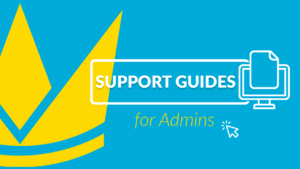Our admins are at the heart of the system. They’re responsible for creating, updating, and distributing documentation that encompasses critical internal processes.
At Web Manuals, we want to provide diverse alternatives to support your important labor throughout all the stages in the document lifecycle. For this, we have developed a Help Center that presents all the information you require to ensure proper system deployment.
A good starting point
We have created a brief guide to help you understand the workflow and review process, to get a clear view from the beginning. Also, you can get an easy step-by-step tutorial to work through the Document Categories. Additionally, you’ll find a detailed guide to setting up your Document Types, which will determine the design, workflow, and much more. Furthermore, you’ll learn how to assign a Document Type to a new document and edit an existing document.
Manage your Compliance libraries
One of the most important tasks for the admin role is correctly managing the compliance libraries. You’ll find instructions to edit, add, remove, and update the compliance libraries in your Web Manuals site, and complete information on how to create your own customized Compliance Library.
We created a useful article to guide you through the process of updating a Compliance Library and the specific requirements to the newest revision. In easy 8 steps, you’ll be able to stay compliant after the regulations connected to your documents have changed.
Control your users, permissions, and forms
An Admin is also taking care of the correct administration of users within the system. We have provided specific instructions to change permissions for a role, determine user types as well as add and remove users. You’ll also find information to understand how to inactivate a user and the difference between archived and deleted users.
As it has been proved by our users, the forms are strategic modules facilitating your job. The support team has created a text to guide you if you are uncertain about creating a form, changing the settings, or managing the entries. Remember: As an Admin, you can always add an entry manually by clicking on Add entry.
Generation of Reports
It’s important to be able to create reports for all types of information you might need. For instance, if you want to obtain a Role Performance Report, you’ll have the option to see the number of users, the average number of reminders, as well as the minimum and maximum number of reminders.
In addition, if you want a User Performance Role, you can access details about a specific user regarding the number of reminders, and the number of new revisions that the user needs to read.
For a Distribute Overview, you’ll see the name and date of the last revision of the document, and the number of users that haven’t read the document yet.
Similarly, in a Review Overview, you can get a list of all the documents currently being reviewed, the number of pages in each step of the workflow, the number of pages rejected, and the total comments. The Monitor Overview shows you a list of all the documents containing outdated links and the total number of links in the document.
Besides, you can get a Distribute Overview to see the documents that have completed the review process and have been recently distributed, with the details about the last revision date and the non-compliant users.
Arrange the System settings
Understanding the system settings allows you to take out the best of our key features. For example, the General Settings will give you control over time formats, language, email templates, and various functionalities to tailor your documents as needed.
You can also manage settings on your Compliance Libraries to select who can assign compliance requirement ownership, who can see the reference to the requirement under the headings, and who can see the heading colored in red when the compliance connection made to it is no longer up-to-date.
By adjusting the EFB settings, you can control security options, select the categories that contain operationally critical documents, and the different alternatives to manage the documents downloaded on the EFB.
Discover a complete guide through the Documents Settings, spanning the entire spectrum of general setups, tags, layouts, structures, modules, page labels, document types, design, workflow, and security.
Also, find alternatives to customize the User Settings for each user type; and the Reader Settings, especially for the Reader dashboard.
FAQs
Finally, we have gathered the most common queries from Admins that will help you answer the following questions straight off:





